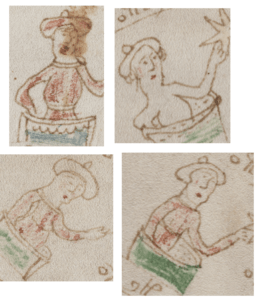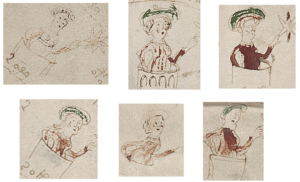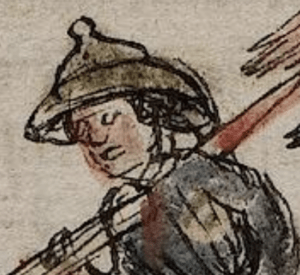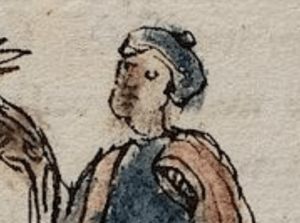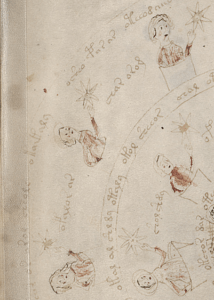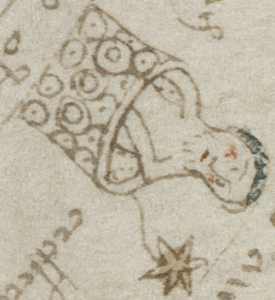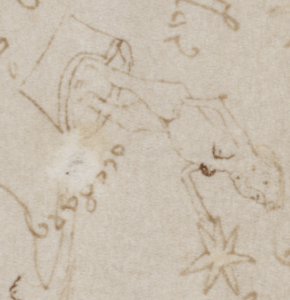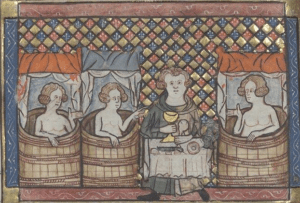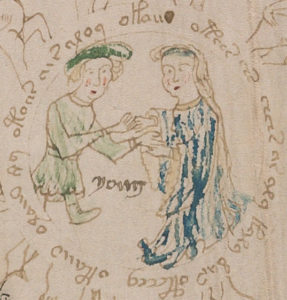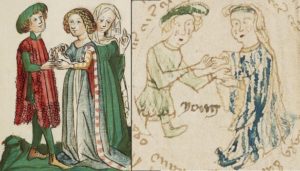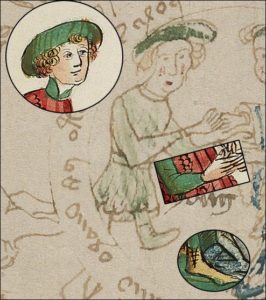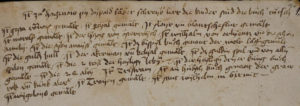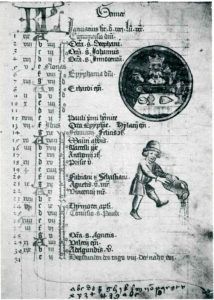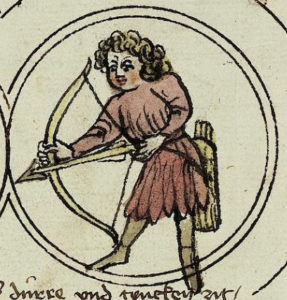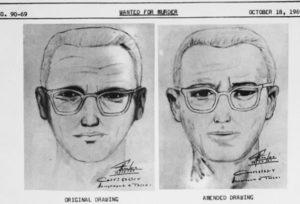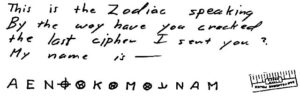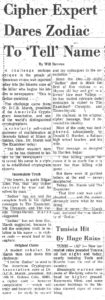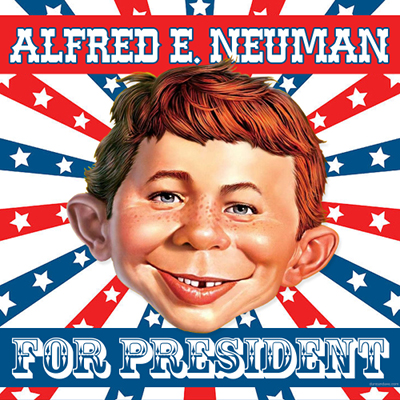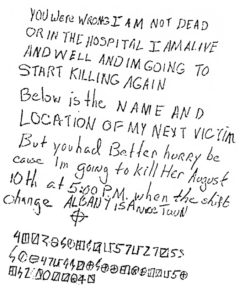I thought it would be a good idea to try to draw up a list of the Voynich Manuscript’s male zodiac nymphs, as a dataset that might be useful when attempting to map between zodiac nymphs and feast days. And yet if you try to do this, it turns out to be really hard, because… what are we looking for, exactly? As the following image from f70v2 should make clear, is the absence of clearly delineated breasts really enough?
Also, if you hope to visually read the nymphs’ red lips as if they were (emblematically female) lipstick, this too is more than a touch problematic. From reading Caterina Sforza’s Gli Experimenti, I recall recipes for hair bleaching/colouring, face whitening, hand cream and rouge for the cheeks, but nothing for lipstick. In fact, lipstick seems to have played no great role in the fifteenth century: cosmetic historians tend to fast-forward to Queen Elizabeth I, who is said to have painted her lips excessively red (some have even theorised that a toxic layer of lipstick led to her demise).
Other nymphs appear to have male, uh, features, but this is often a result of how long you stare at them. The scans are good, but they’re far from definitive, let’s say. Meet the particular Gemini nymph I have in mind here:
As a result, I ended up spending a good amount of time looking at all the zodiac nymphs under the (virtual) microscope. (I used Jason Davies’ “Voynich Manuscript Voyager”, because the printing in the various facsimile editions I have wasn’t good enough to do this.) Which was when I found the Aries hats…
The Aries hats
Starting with Aries, the page layout changes format from 30 nymphs per page to 15 per page. This is accompanied by a change in style, where the drawings are slightly more detailed. This change continues through Taurus, but then flips back to 30 nymphs per page for the remainder of the zodiac.
What I found interesting was that “light Aries” (the second set of 15 zodiac nymphs for Aries) has a number of zodiac nymphs with a distinctive head-dress.
Though there are more hats on the page which follows (Taurus), only one of those has the same distinctive “bobble” on the top, and that is atop a (I think quite different) hat which is far more akin to a turban, AKA chaperon. (You can see mid-15th century chaperons here and here. And maybe here.)
So… what is this hat, then?
Is the thing on top a pom-pom? If not, then what?
The bobble on top seems far too small to be a fitted cap, so I think we can rule out hat styles like the galero. It seems to be a decorative style rather a practical style: or might it be a small peak on top, like a much smaller version of the truncated cones seen in some mid-fifteenth century hennins. Maybe it’s a pom-pom, but I have my doubts. (Plenty of them)
And having now trawled miserably through several thousand fifteenth century images looking for similar hats, I have found not a single one, and I have to admit defeat. Even the useful set of headdresses courtesy of Susan Reeds’ thesis is of no obvious help to us here, while Sophie Stitches has a good page of sources that also doesn’t seem to help. If it’s a kind of flat hat, Susan Reeds notes that “[a]s with cauls and sugarloaf hats, flat hats were worn mostly by men in the gentry or courtier/professional/official classes“.
So… what is this hat? My general feeling is that it must be a kind of hat that was probably unique to a particular time (perhaps no longer than a decade) and a particular place. Whoever finds when and where might well make a significant step forward here. But it doesn’t feel like that person is going to be me.
Diebold Lauber manuscripts
Finally, I had a good look through a number of Diebold Lauber manuscripts, but found only fragmentary matches, such as these from Cod Pal Germ 314:
(Last one from f49v).
Cod Pal germ 137 was equally unimpressive, with only a few knots on top of hats that are more in line with what are known as “acorns”:
Feel free to do much, much better than me in the hunt for this hat…


